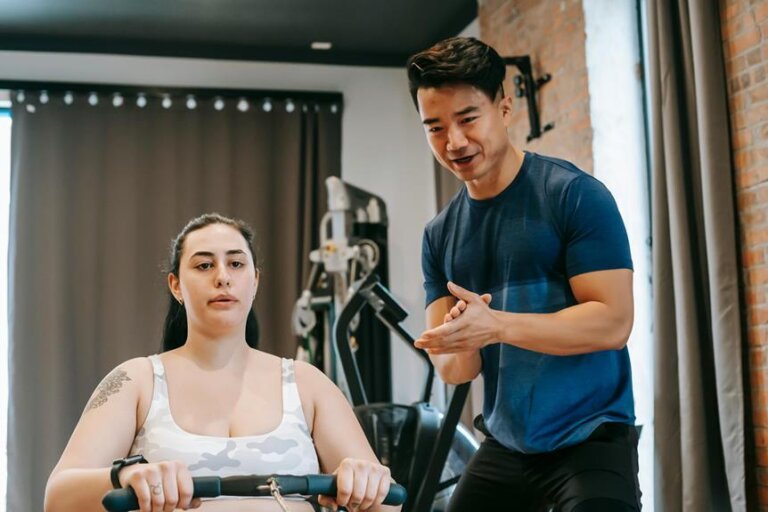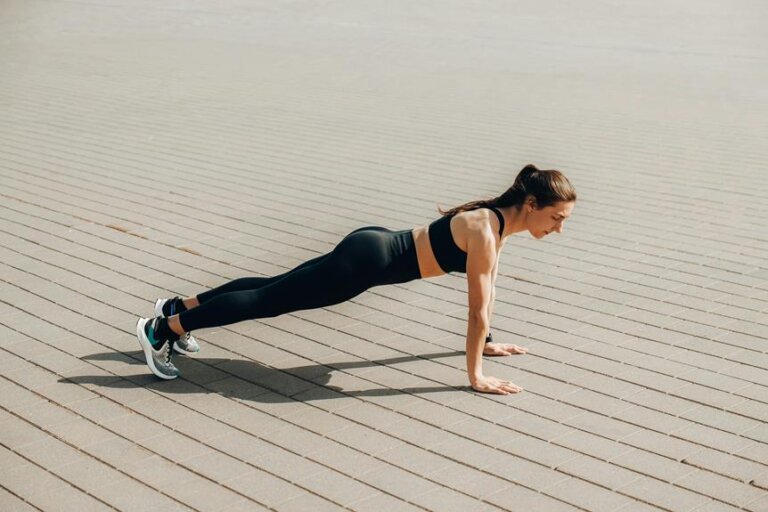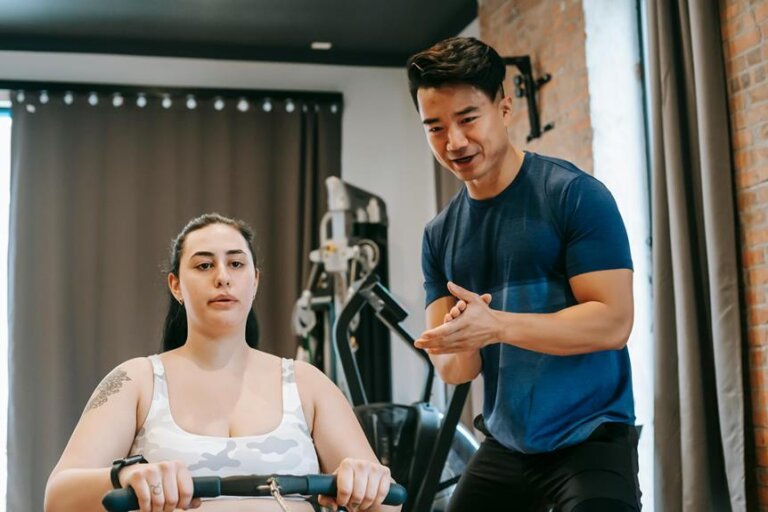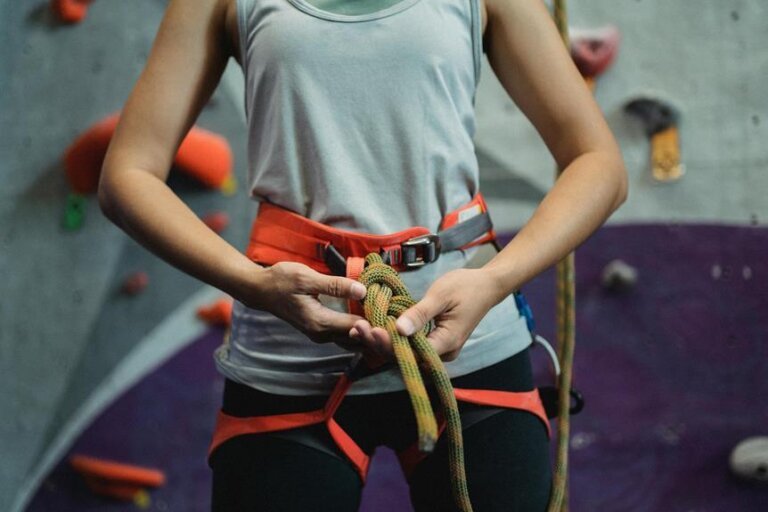Incorporating Functional Training Into Your Fitness Regimen for Improved Daily Living
Ever found yourself struggling to pick up a gallon of milk without feeling like you've run a marathon? Perhaps it's time to consider how functional training could revolutionize your daily physical capabilities. By incorporating specific movements and exercises into your fitness routine, you might just discover a newfound ease in performing everyday tasks.
But before you dismiss it as just another fitness fad, let's delve into the practical benefits that functional training can offer beyond the gym walls.
Benefits of Functional Training
Functional training enhances your ability to perform everyday tasks efficiently and reduces the risk of injuries by focusing on movements that mimic those used in daily life. By incorporating functional exercises into your fitness routine, you can improve your balance, flexibility, strength, and overall coordination. These exercises target multiple muscle groups simultaneously, helping you to develop a more well-rounded and functional level of fitness.
Additionally, functional training can enhance your body's stability and mobility, making it easier for you to navigate through various physical activities in your daily life. Whether you're lifting groceries, playing with your children, or doing household chores, the improved strength and coordination gained from functional training will enable you to move more effectively and with less risk of injury.
Functional Movements to Focus On
Focus on core stability exercises to strengthen your midsection and support your spine.
Improve your balance and coordination, enhancing your ability to move efficiently in everyday tasks.
Emphasize full-body integration to train muscles to work together seamlessly for optimal functionality.
Core Stability Exercises
To enhance your core stability, incorporate these essential exercises into your routine. Planks are a great way to engage your core muscles. Start by holding a plank position for 30 seconds and gradually increase the duration as you get stronger.
Russian twists are another effective exercise to target your obliques. Sit on the floor, lean back slightly, and twist your torso from side to side while holding a weight or a water bottle.
Deadbugs can help improve core stability by challenging your coordination. Lie on your back, extend your arms and legs towards the ceiling, then lower opposite arm and leg towards the floor while keeping your core engaged.
Incorporating these core stability exercises will help you build a strong foundation for improved daily living.
Balance and Coordination
Improve your balance and coordination by integrating dynamic movements that challenge your stability and agility.
Incorporating exercises like single-leg stands, bosu ball squats, and lateral cone drills can help enhance your balance and coordination. Single-leg stands require you to balance on one leg, engaging your core and lower body muscles to stabilize yourself.
Bosu ball squats involve squatting on an unstable surface, forcing you to control your movements and balance. Lateral cone drills focus on quick side-to-side movements, improving your coordination and agility.
These functional movements not only strengthen your muscles but also train your body to move more efficiently in daily activities, reducing the risk of falls and enhancing overall physical performance.
Full Body Integration
Enhance your functional training by incorporating full-body integration through movements that engage multiple muscle groups simultaneously.
Exercises such as squats with overhead presses, deadlifts with rows, and lunges with twists are great examples of full-body functional movements that can help improve your overall strength, stability, and coordination.
These compound exercises not only target specific muscles but also challenge your body to work together as a unit, mimicking real-life activities and enhancing your daily functional abilities.
By focusing on full-body integration in your training regimen, you can build a strong foundation that supports your daily movements, reduces the risk of injuries, and boosts your overall physical performance in various activities.
Incorporate these movements regularly to experience a well-rounded functional fitness improvement.
Equipment for Functional Training
Consider incorporating a resistance band into your functional training routine to target various muscle groups effectively. Resistance bands are versatile and affordable tools that can add resistance to your exercises, helping to improve strength, stability, and flexibility. They're especially beneficial for functional training as they allow you to perform a wide range of movements that mimic everyday activities.
Another piece of equipment to consider is a set of dumbbells. Dumbbells can be used for exercises that engage multiple muscle groups simultaneously, promoting functional strength and coordination. They're particularly useful for unilateral exercises, which help to address muscle imbalances and enhance overall stability.
Additionally, a stability ball can be a valuable tool for improving balance, core strength, and posture. By incorporating exercises on a stability ball into your routine, you can challenge your stability and engage stabilizing muscles that are crucial for daily activities.
These equipment options are accessible and effective for enhancing your functional training regimen, ultimately leading to improved daily living.
Incorporating Functional Training at Home
To effectively incorporate functional training at home, start by identifying a dedicated workout space that's free from distractions. Choose an area with enough room to move freely and safely. This could be a spare room, a corner of your living room, or even your backyard if weather permits. Clear the space of any obstacles to prevent accidents during your workout.
Next, consider investing in some basic equipment such as resistance bands, dumbbells, a stability ball, or kettlebells to enhance your training sessions. These tools can add variety and challenge to your exercises without taking up too much space. You can also use household items like water bottles or cans as makeshift weights if you're on a budget.
Additionally, establish a consistent routine that fits your schedule and stick to it. Whether it's early morning or before bed, find a time that works best for you and make it a habit. By creating a dedicated workout space and incorporating simple equipment, you can effectively integrate functional training into your daily routine at home.
Functional Training for Different Fitness Levels
Whether you're a beginner or an experienced athlete, adapting functional training to different fitness levels can help you achieve your goals effectively. For beginners, starting with bodyweight exercises like squats, lunges, and planks can build a foundation of strength and stability. These movements help improve balance and coordination, essential for daily activities. As you progress, incorporating resistance bands or light dumbbells can add intensity to your workouts.
Intermediate fitness levels can benefit from more complex movements such as kettlebell swings, medicine ball throws, and TRX rows. These exercises challenge multiple muscle groups simultaneously, enhancing overall functional strength. It's important to gradually increase the weight or resistance to continue seeing improvements.
Advanced athletes can take functional training to the next level by incorporating explosive movements like box jumps, power cleans, and battle rope exercises. These dynamic exercises improve power, agility, and coordination, translating to enhanced athletic performance.
Regardless of your fitness level, customizing functional training to suit your capabilities ensures a challenging yet safe workout routine that supports your daily living needs.
Importance of Proper Form in Functional Exercises
Maintaining proper form in functional exercises is crucial for maximizing effectiveness and preventing injuries. When you perform exercises with correct form, you target the intended muscles more effectively, leading to better strength gains and functional improvements. Proper form also helps in distributing the workload evenly across muscles, reducing the risk of strain or overuse injuries.
Focusing on your form during functional exercises ensures that you engage the right muscles and movement patterns, translating into real-life activities. For instance, when doing a squat, keeping your chest up, back straight, and knees aligned over your toes not only targets your lower body muscles efficiently but also promotes safe movement mechanics for daily tasks like bending down to pick up objects.
Tracking Progress in Functional Training
Keeping track of your progress in functional training is essential for monitoring your improvements and setting new goals. By recording your starting point and regularly logging your workouts, you can see how far you've come and identify areas for growth.
One effective way to track progress is by keeping a workout journal. Note down the exercises you do, the number of repetitions, sets, and the weight used. This will help you see improvements over time and adjust your training accordingly.
Additionally, consider using performance metrics such as timing yourself during specific exercises or measuring the distance you can cover in a set period. These objective measurements can provide valuable insights into your progress.
Another useful tool is taking regular photos or measurements of your body. Sometimes changes in strength and endurance may not be immediately visible, but tracking physical changes can show improvements.
Combining Functional Training With Other Workouts
To enhance your fitness routine, consider integrating functional training with other workouts for a well-rounded approach to improving strength and mobility. By combining functional training with activities like yoga or Pilates, you can focus on flexibility and core strength, complementing the functional movements that target everyday activities.
Additionally, incorporating cardiovascular exercises such as running or cycling can enhance your endurance and overall cardiovascular health, which are essential for daily living.
Strength training exercises like weightlifting or bodyweight exercises can also be integrated to build muscle mass and increase overall strength, further supporting the functional movements you practice. Cross-training with activities that challenge different muscle groups can prevent overuse injuries and keep your workouts engaging and effective.
Remember to listen to your body and adjust your workout intensity and frequency as needed. By diversifying your routine and combining functional training with various exercises, you can achieve a balanced fitness regimen that enhances your overall physical capabilities and improves your quality of life.
Frequently Asked Questions
Can Functional Training Help With Specific Medical Conditions or Injuries?
Functional training can be beneficial for specific medical conditions or injuries by improving strength, mobility, and coordination. It helps in rehabilitating and preventing injuries through targeted exercises tailored to your needs and abilities.
Is It Necessary to Hire a Trainer for Functional Training, or Can I Do It on My Own?
You might benefit from a trainer for proper form and guidance in functional training. Yet, with dedication and research, you can start on your own. Remember, safety first! A trainer can fine-tune your skills later.
Are There Any Specific Dietary Recommendations to Complement Functional Training?
To complement functional training, focus on balanced meals with lean proteins, whole grains, fruits, and vegetables. Hydrate well and consider pre and post-workout snacks for energy. Remember, nutrition plays a crucial role in supporting your fitness goals.
How Often Should I Incorporate Rest Days Into My Functional Training Routine?
How often should you incorporate rest days into your functional training routine? Balancing intensity with recovery is crucial. Listen to your body's cues, aim for 1-2 rest days per week. Rest supports muscle repair and growth, enhancing performance.
Can Functional Training Improve Cognitive Function and Mental Health in Addition to Physical Fitness?
Functional training can indeed enhance cognitive function and mental well-being alongside physical fitness. By engaging in exercises that mimic real-life movements, you stimulate both body and mind, fostering overall wellness and vitality.
Conclusion
You absolutely must incorporate functional training into your fitness routine if you want to conquer daily life with ease.
From improving your strength and mobility to enhancing your overall quality of life, functional training is the key to unlocking your full potential.
So don't wait any longer – start incorporating functional movements into your workouts today and watch as your daily living improves in ways you never thought possible!





